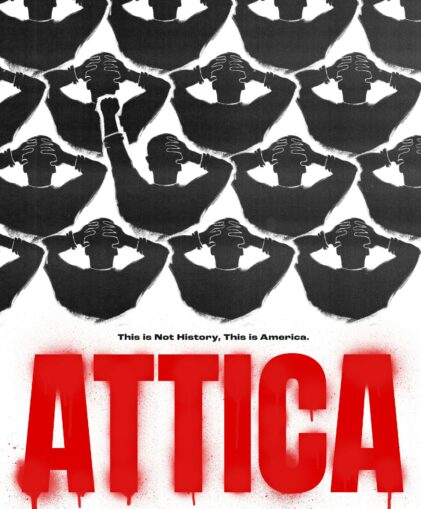Film review ‘Attica’ explores heroic prison uprising
The Attica documentary, co-directed by Stanley Nelson and Traci Curry, was released by Showtime in early November. The two-hour film is a powerful yet painful reminder of what took place over 50 years ago, Sept. 9-13, 1971, when thousands of prisoners at the Attica Correctional Facility in upstate New York, collectively saying “enough is enough,” liberated D yard and took over two dozen white guards hostage.

The rebellion culminated Sept. 13, when fascistic New York State Troopers fired thousands of rounds of bullets into unarmed men, already overcome with blinding tear gas, resulting in the deaths of 29 prisoners and 10 guards.
These men — African American, Puerto Rican, Indigenous and poor white — came together in unity out of desperation to tell the world they wanted to be treated like human beings.
The movie brilliantly tells the story of the most profound U.S. prison rebellion of the 20th century, with historic footage and recent interviews with surviving former Attica prisoners, members of the observer committee and family members of the guards.
Che Nieves, Daniel Sheppard, Al Victory and James Asbury are just a few of the Attica brothers who shared their reflections. They described the unspeakable, horrific conditions they faced daily that led to the prison takeover — one roll of toilet paper per month, one shower a week, rotten food, lack of medical care and random beatings at night from racist guards, often resulting in permanent injuries and even death. Succinctly put, the Attica Rebellion was all about survival in a hellhole.
A main spark for the Rebellion was the assassination of George Jackson, an imprisoned leader of the Black Panther Party in Soledad Prison in California. The most politicized Attica prisoners admired the Marxist writings of Jackson, who was murdered Aug. 21, 1971. The Attica prisoners wore black armbands and refused to eat in honor of Jackson, putting prison officials on high alert that a cataclysmic event was in the making.
Some of the most inspiring segments of the documentary showed historic footage of prisoners organizing themselves, cell block by cell block, during the four days before the state’s assault. They dug latrines to dispose of human waste, provided food, security, medical care and slept in tents under the most difficult conditions. As Larry Holmes once stated, the Attica Rebellion was a modern day “Paris Commune of 1871.”
Footage showed the prisoners sharing their demands with an observer committee of their choosing, which included lawyers, activists and news broadcasters allowed to bring in cameras. Elliott “L.D.” Barkley, the most recognizable leader of the rebellion, was shown reading the demands of the prisoners, including him saying that Attica was “the sound before the fury of the most oppressed.” Singled out after the massacre, Barkley was brutally executed.
Out of over 25 demands made, one that was nonnegotiable for the prisoners was complete amnesty and no retaliation for those who participated in the rebellion.
When one of the prison guards died, New York Governor Nelson Rockefeller and “law-and-order” President Richard Nixon gave the go-ahead for state troopers to carry out the savage massacre, shouting the N word repeatedly as they were shooting.
The movie showed the graphic carnage of dead bodies riddled with bullets, the survivors forced to crawl in filthy latrines, and Black and Brown naked men being paraded in the prison yard, as if being prepared for a slave auction. State troopers were shown shouting “white power” outside the prison with horrific glee.
While the surviving Attica prisoners and the guards’ families received millions of dollars in monetary compensation, many years after the massacre, none of the state troopers, nor Rockefeller and Nixon, were ever legally brought to justice for their crimes against humanity.
“Attica ” exposes human rights violations in the U.S. and that as mass incarceration grows, more Atticas are inevitable.

